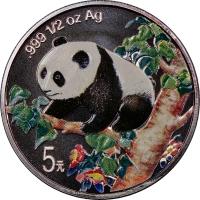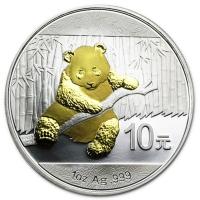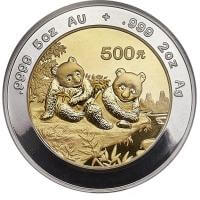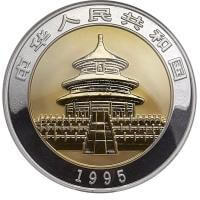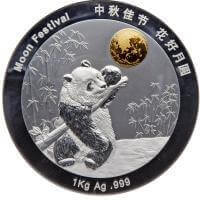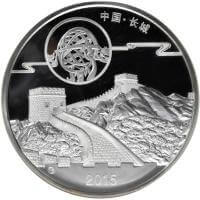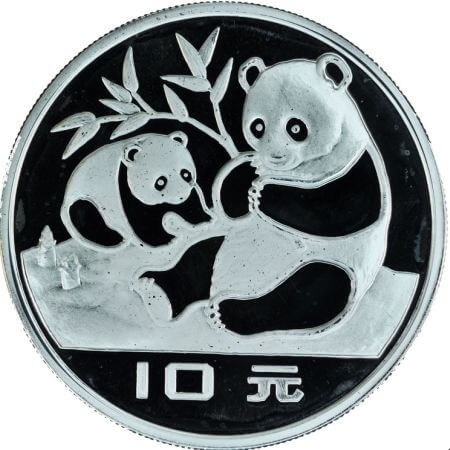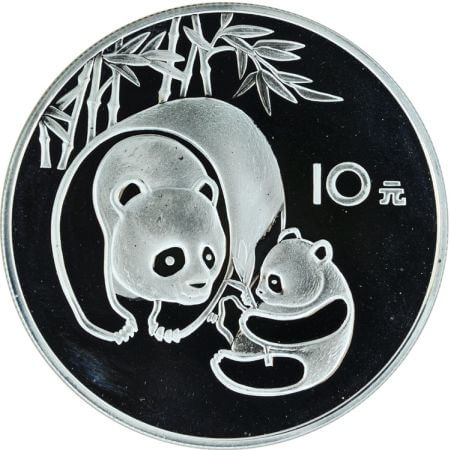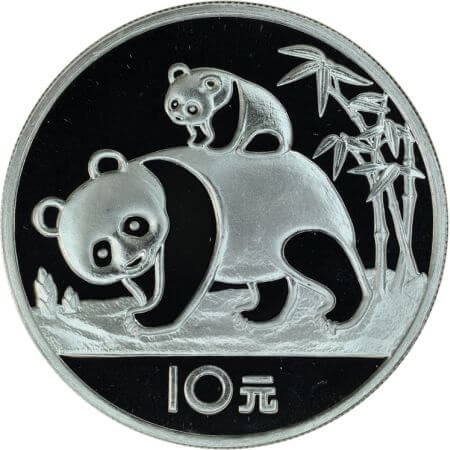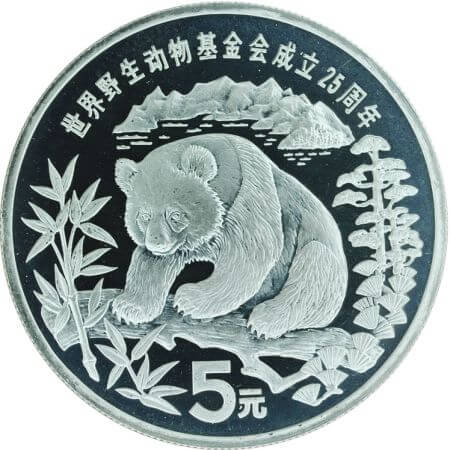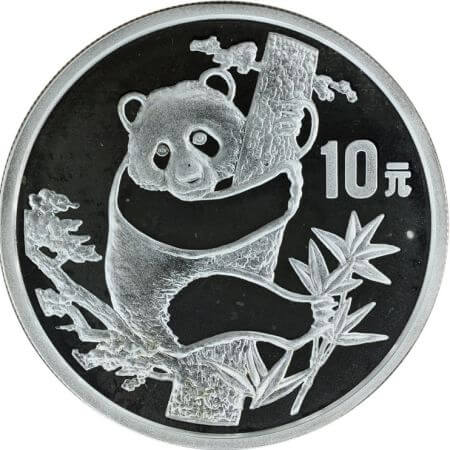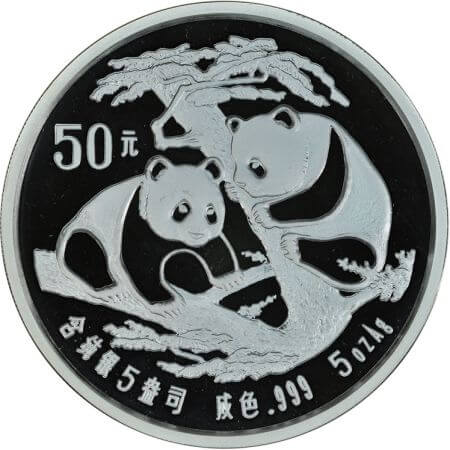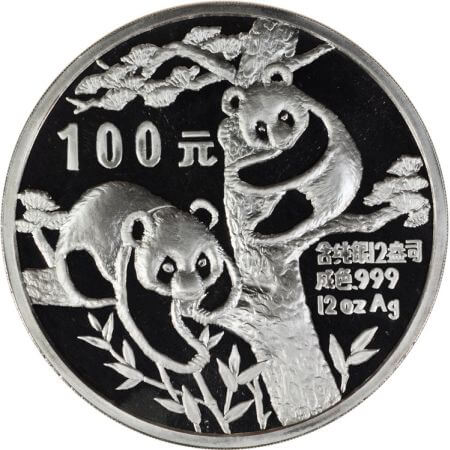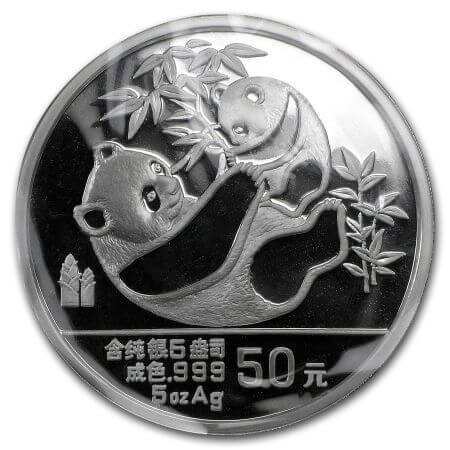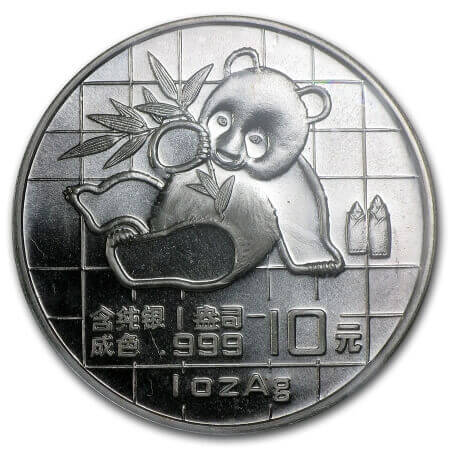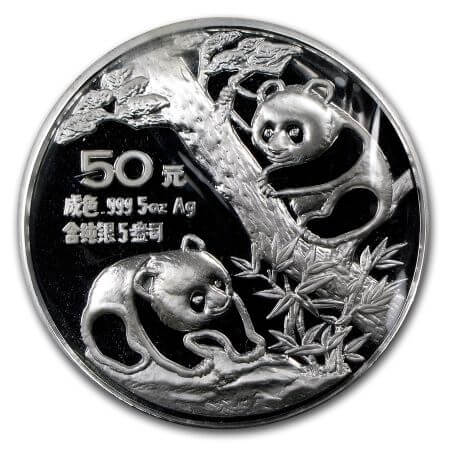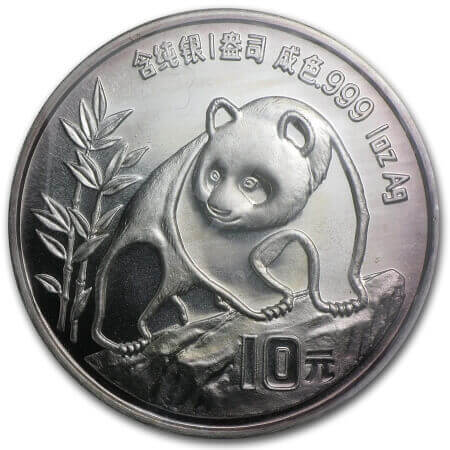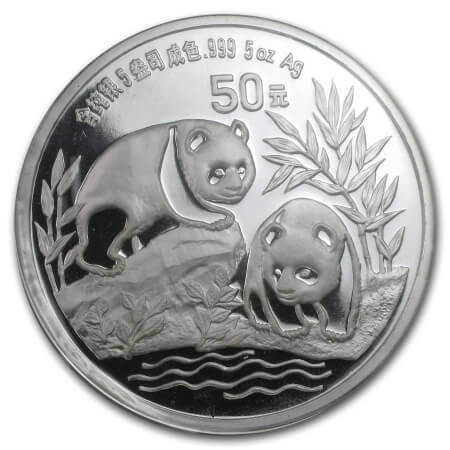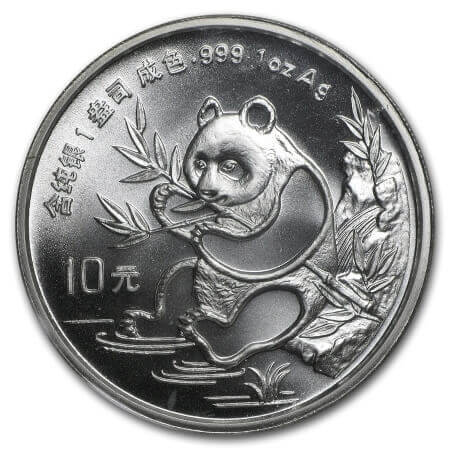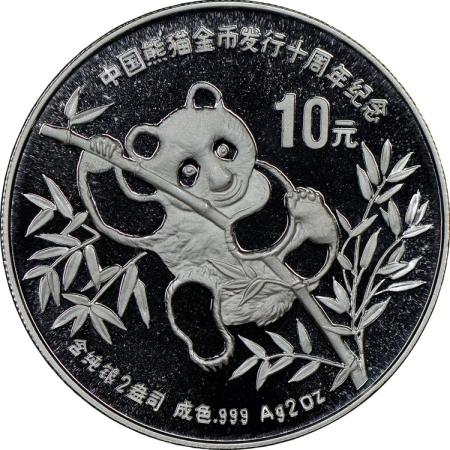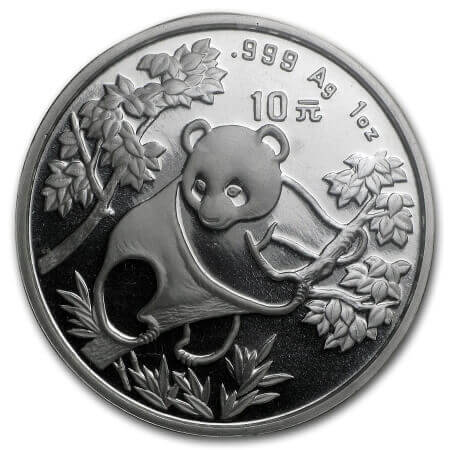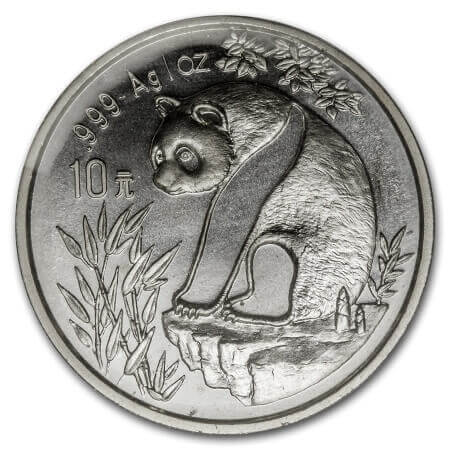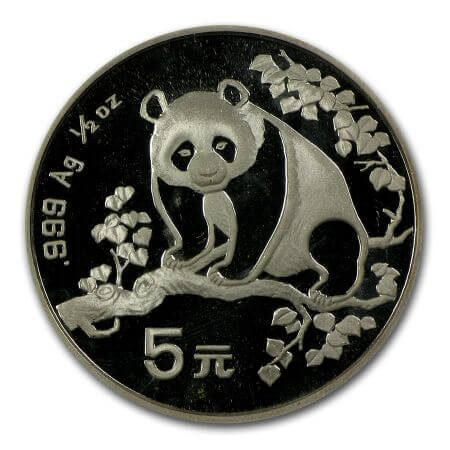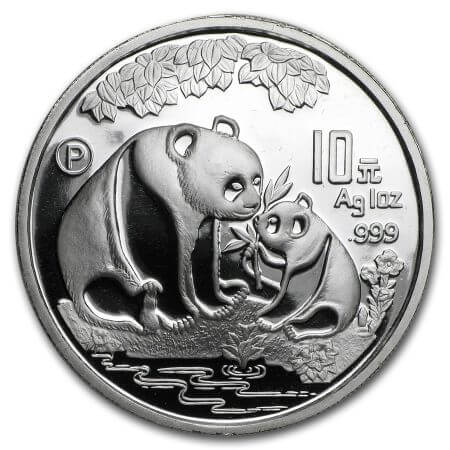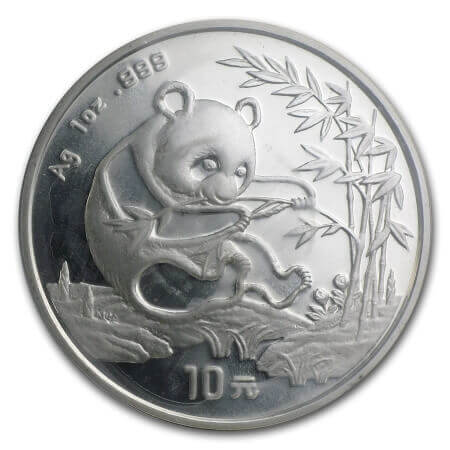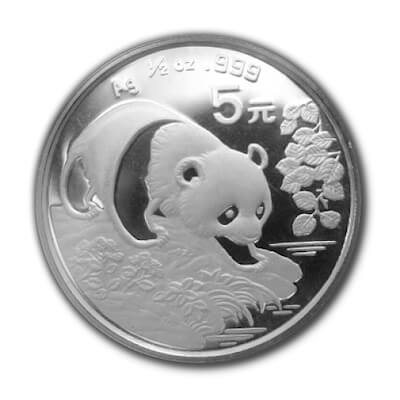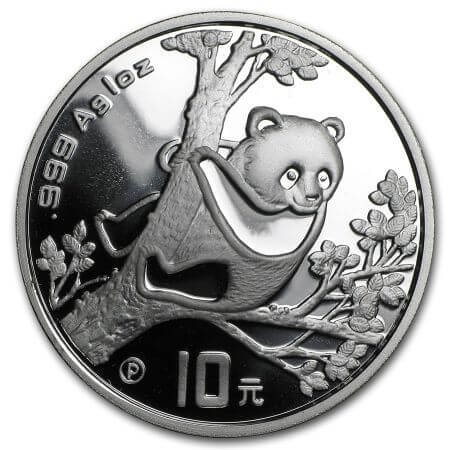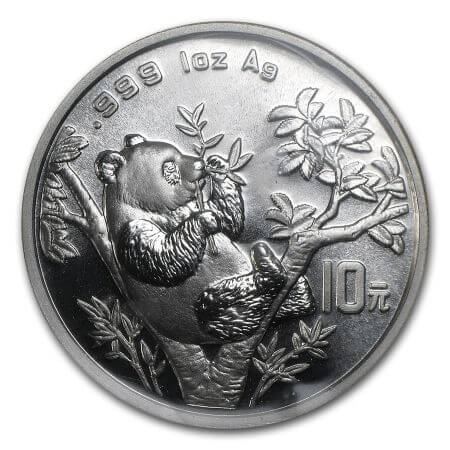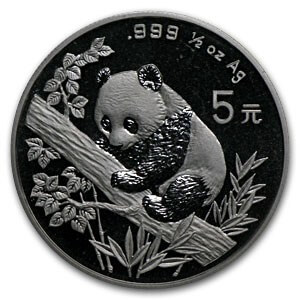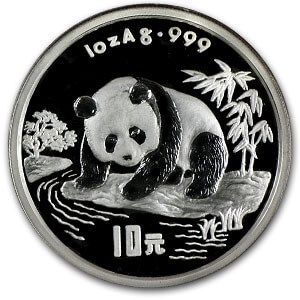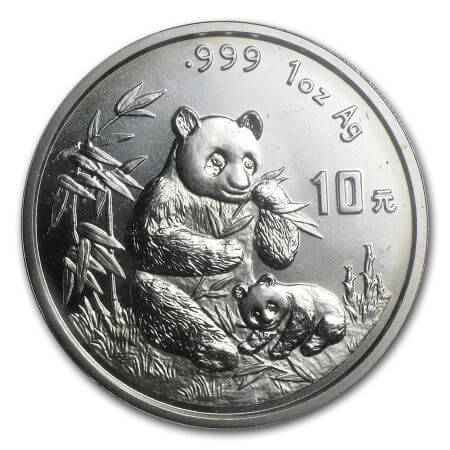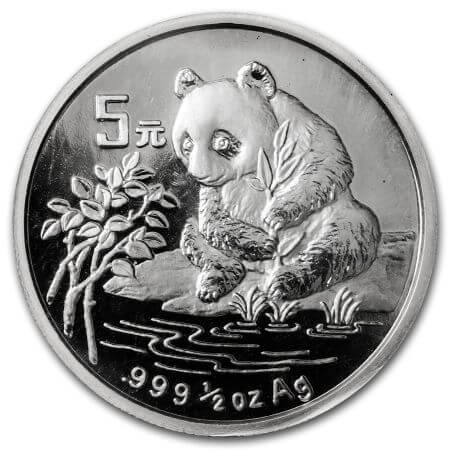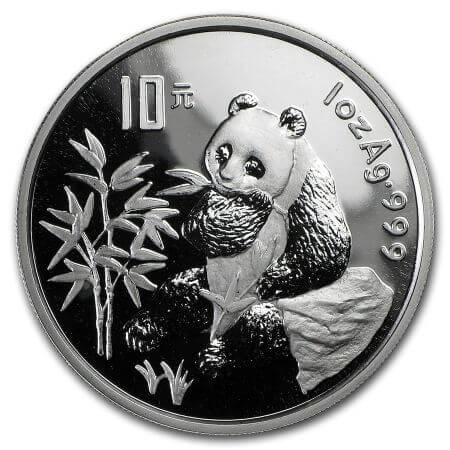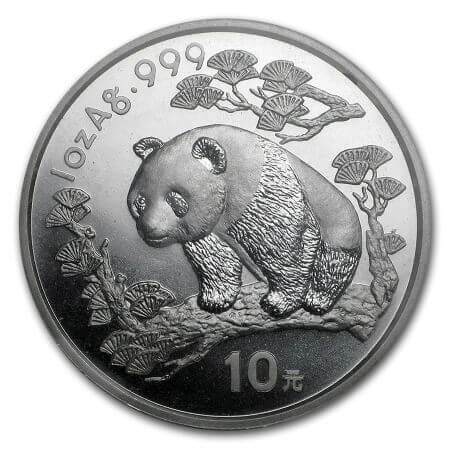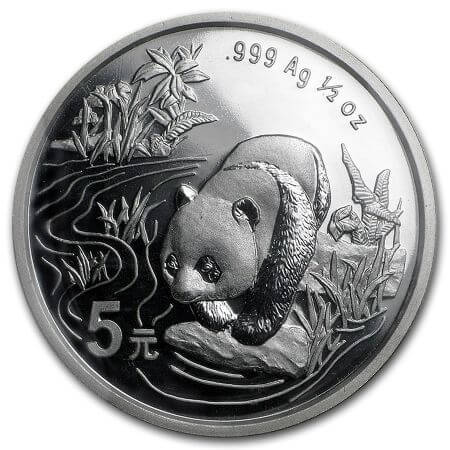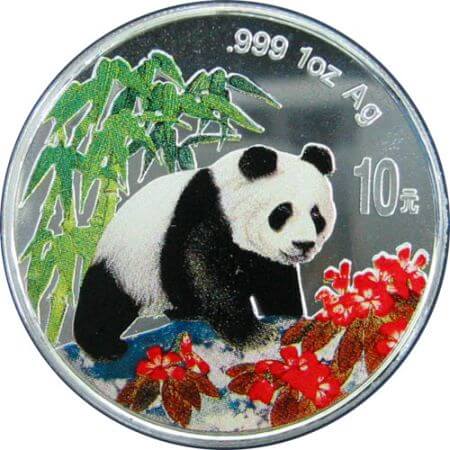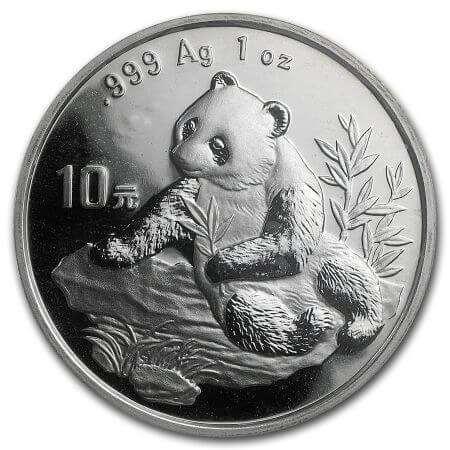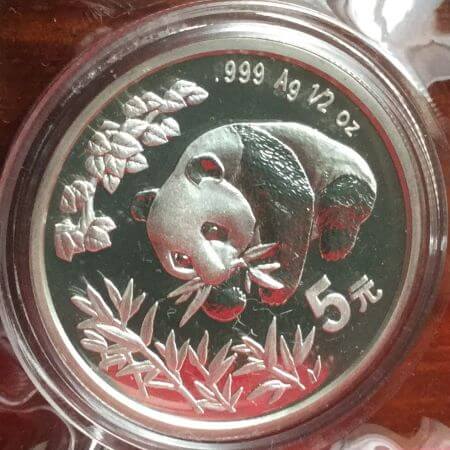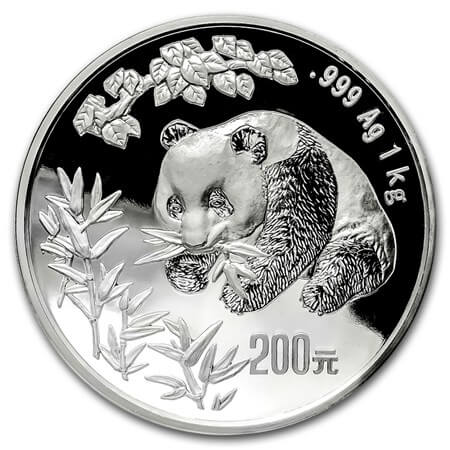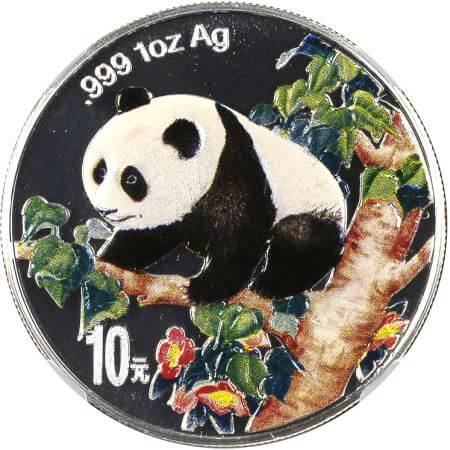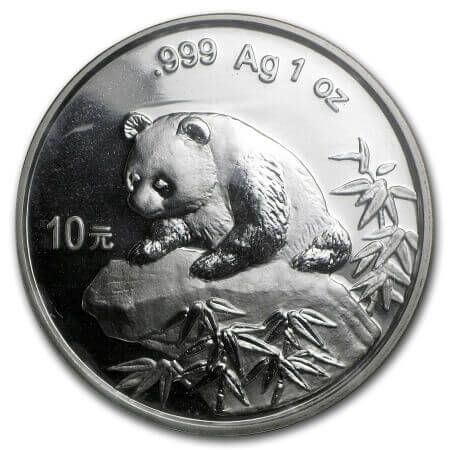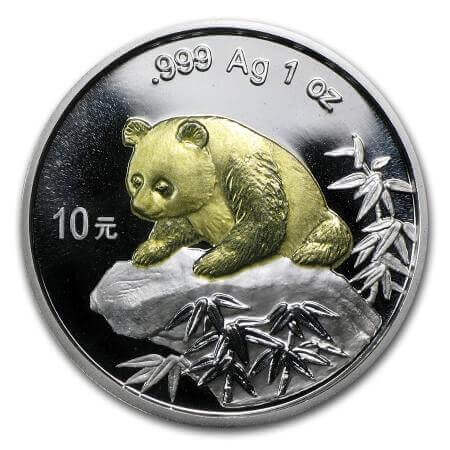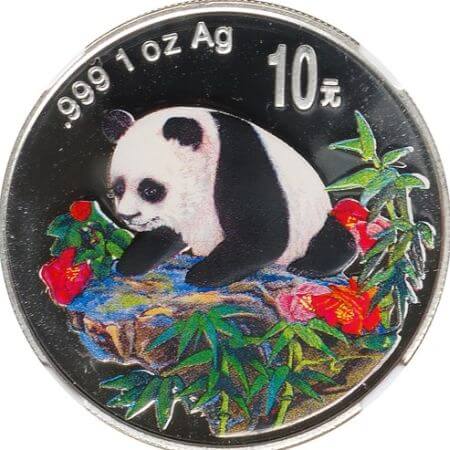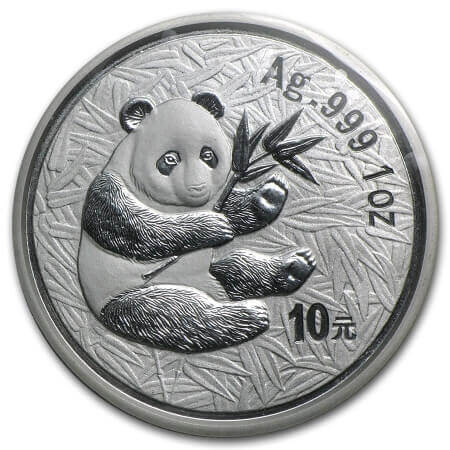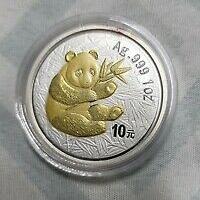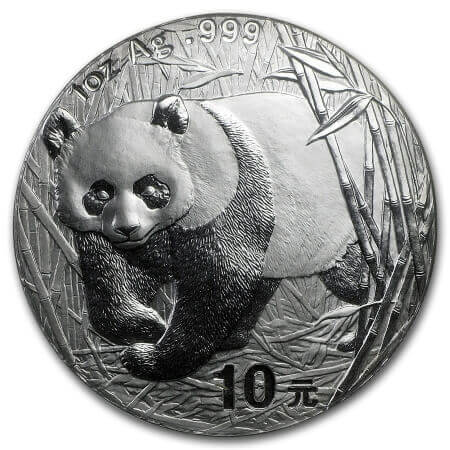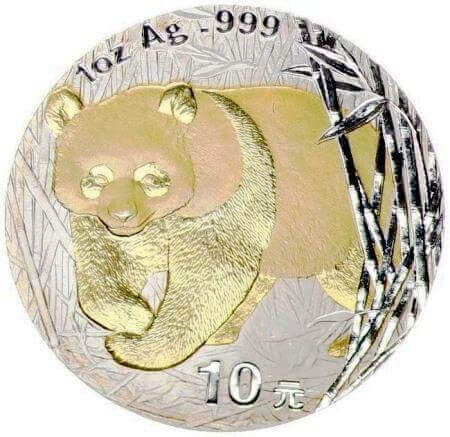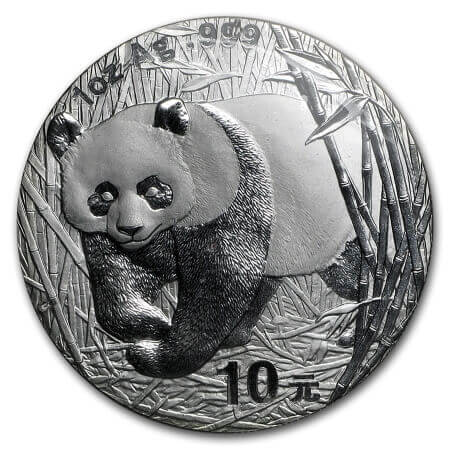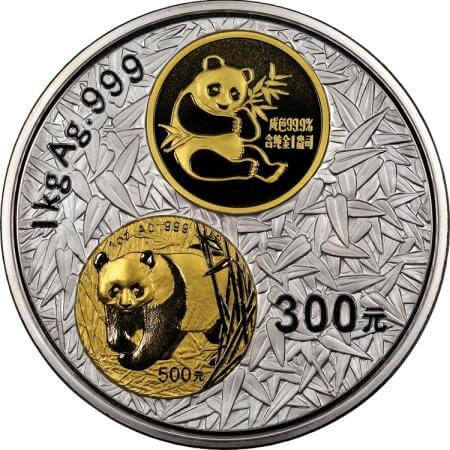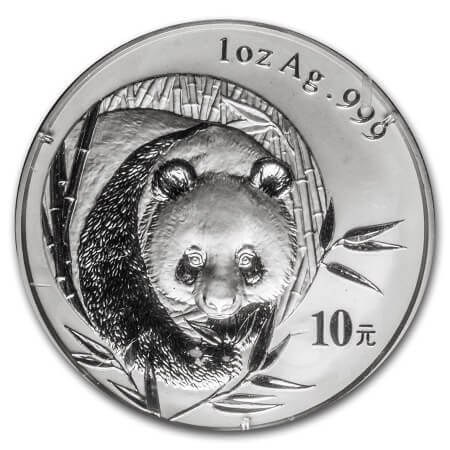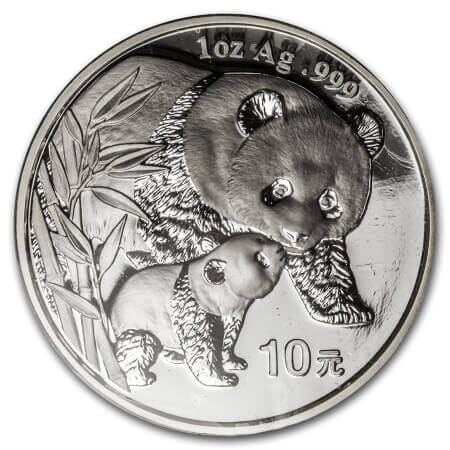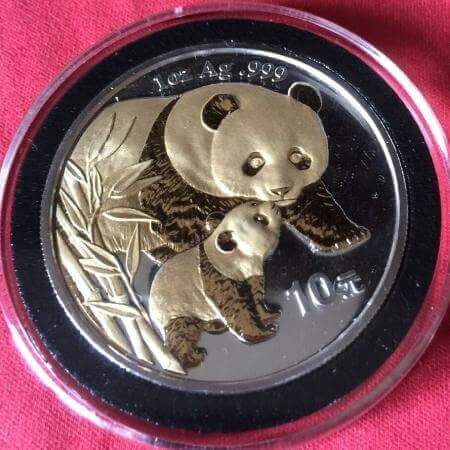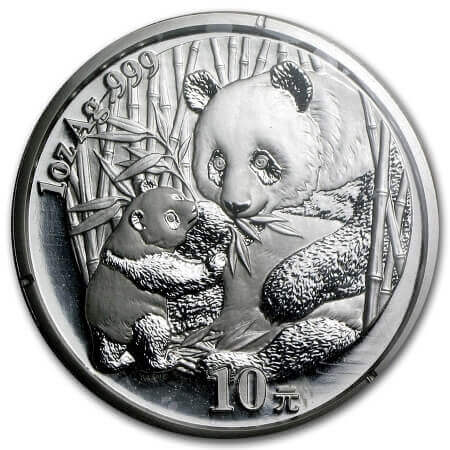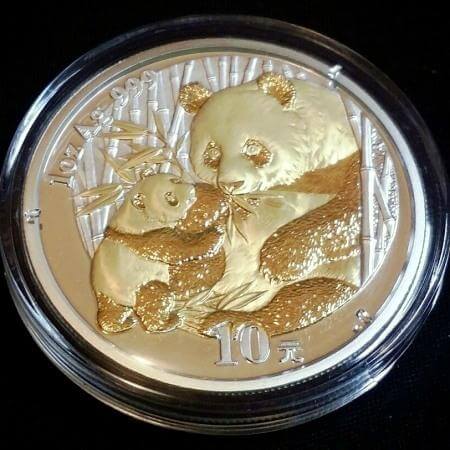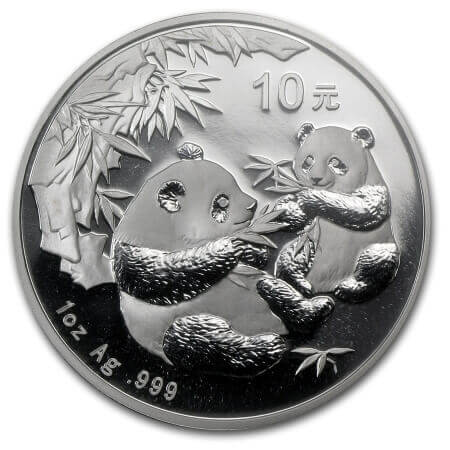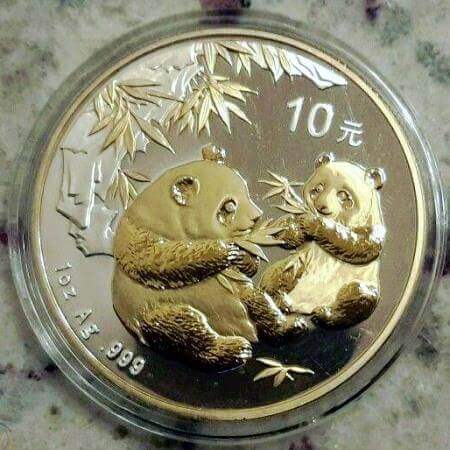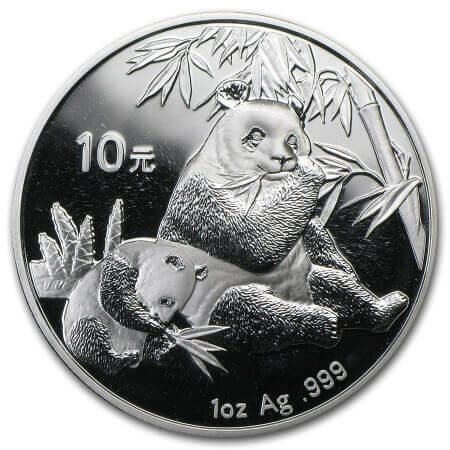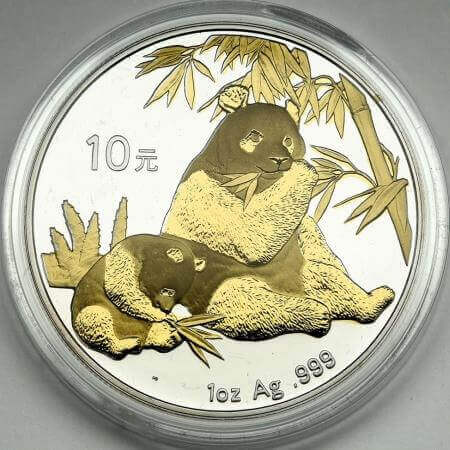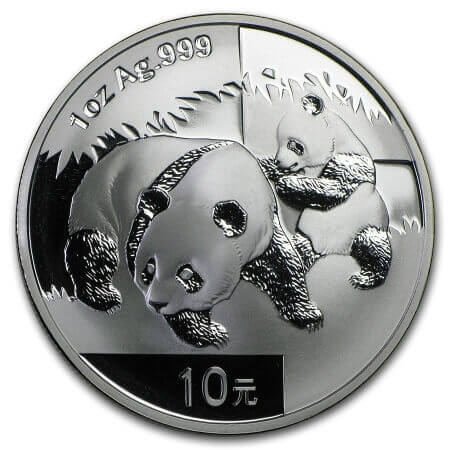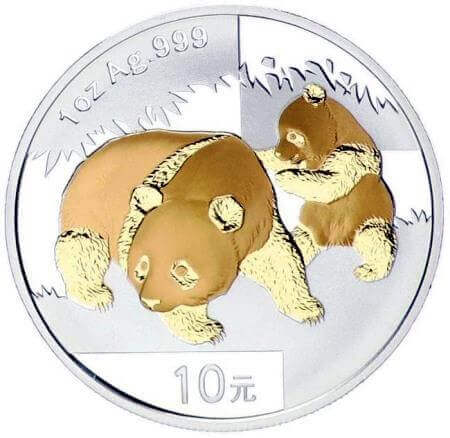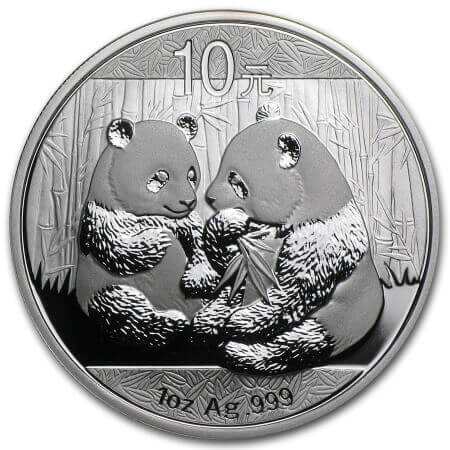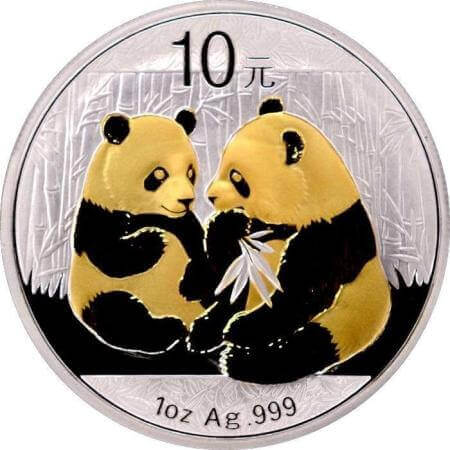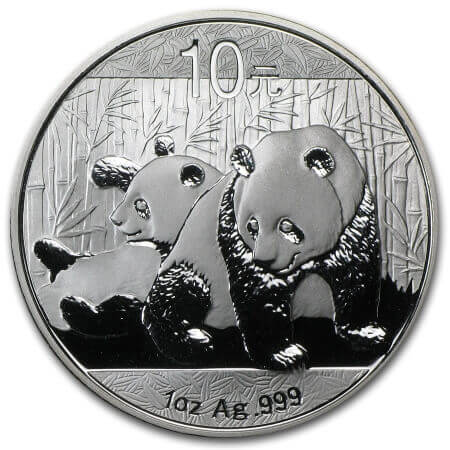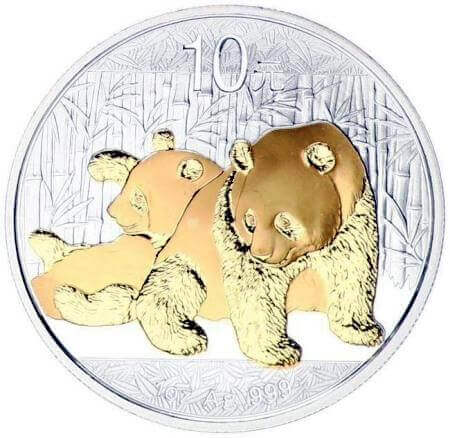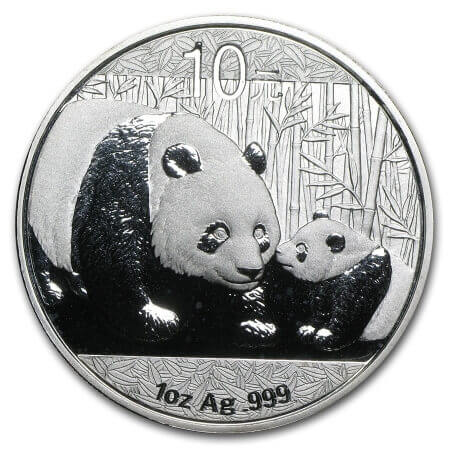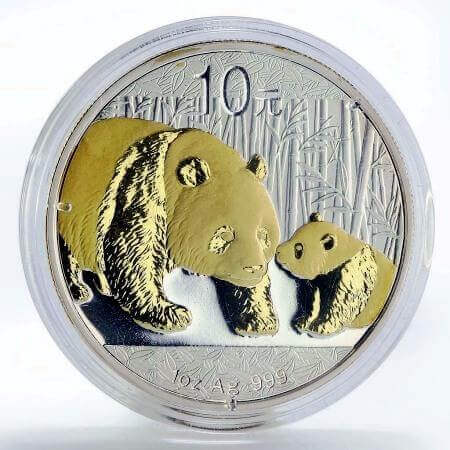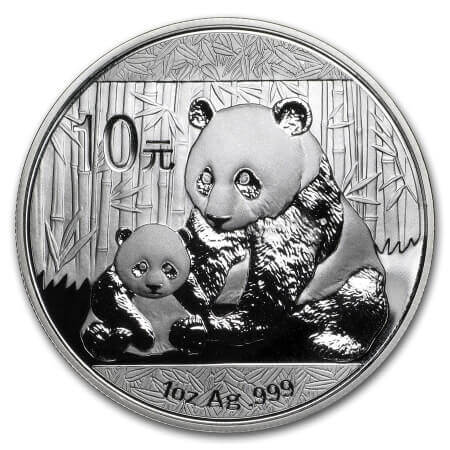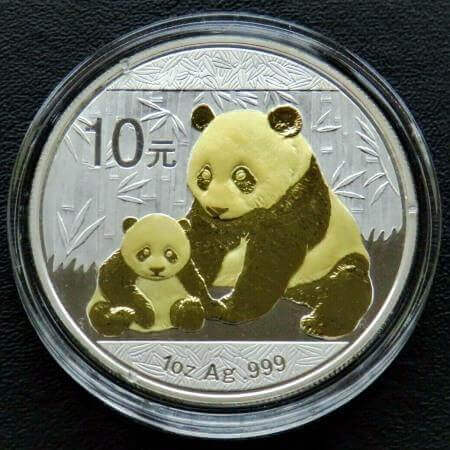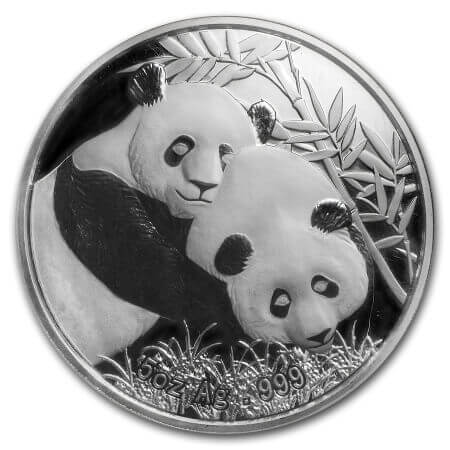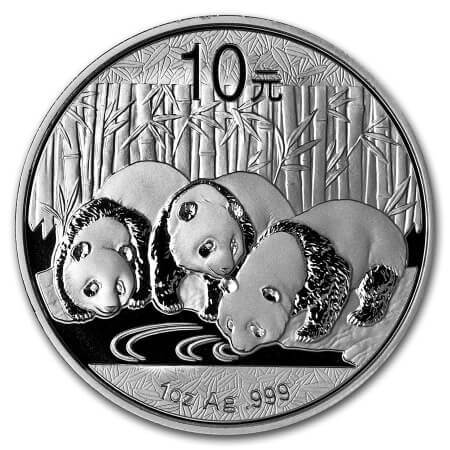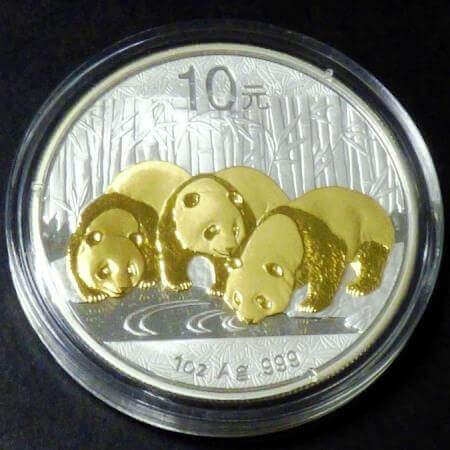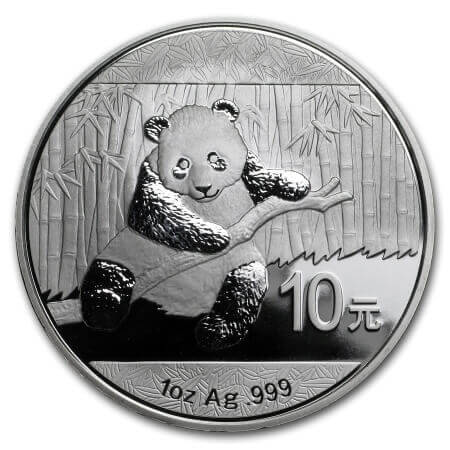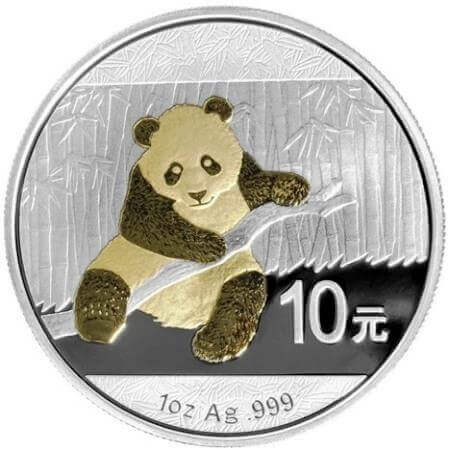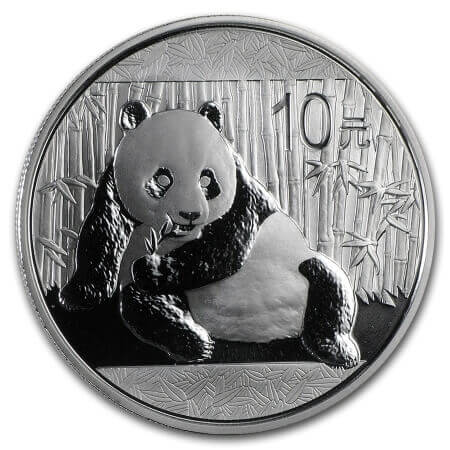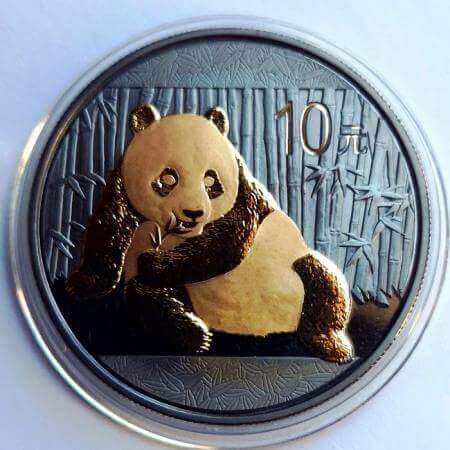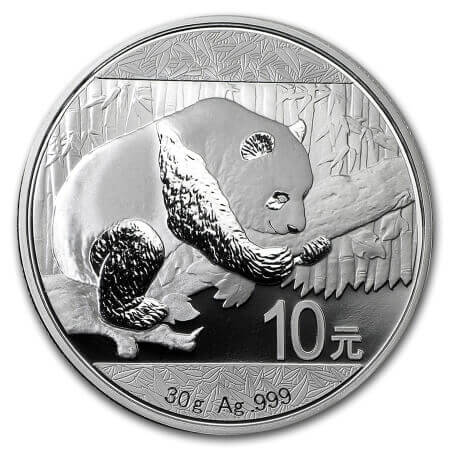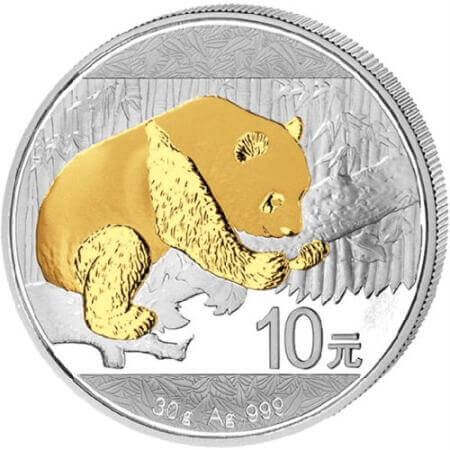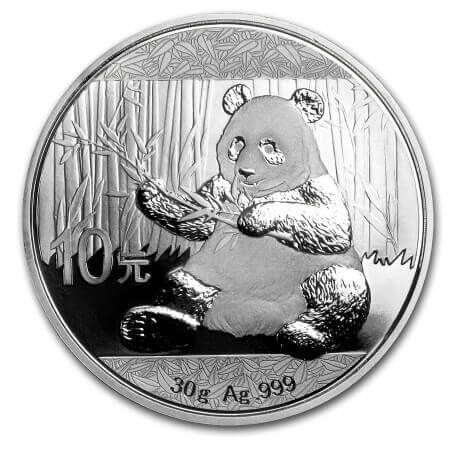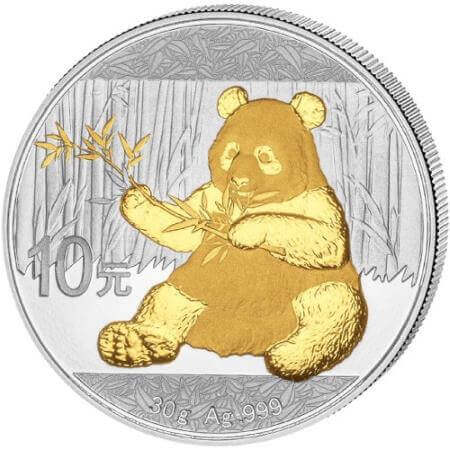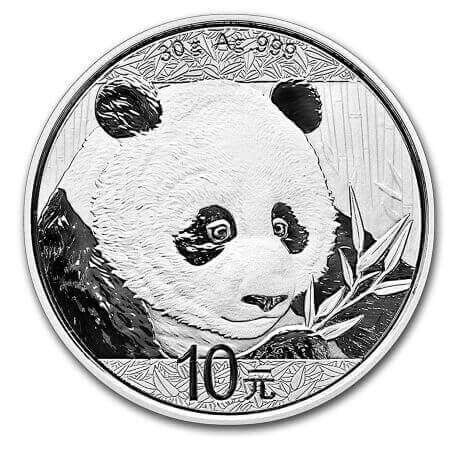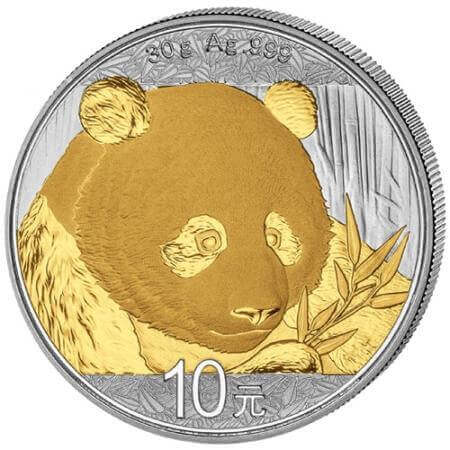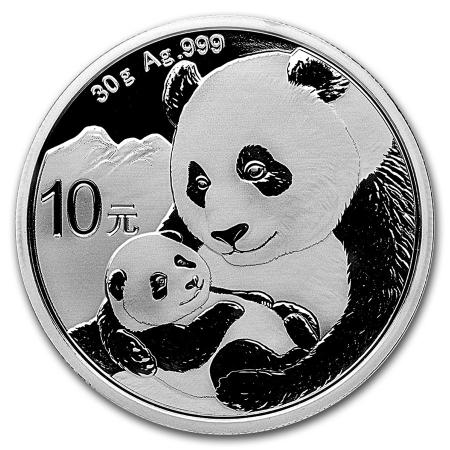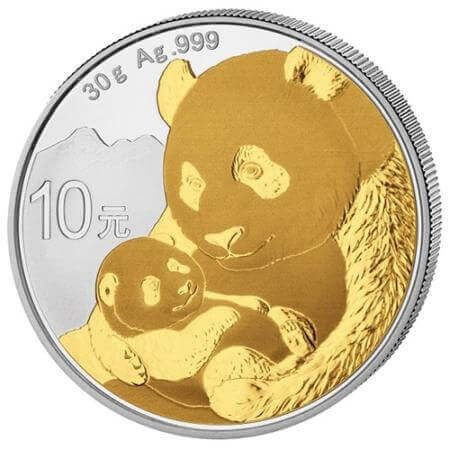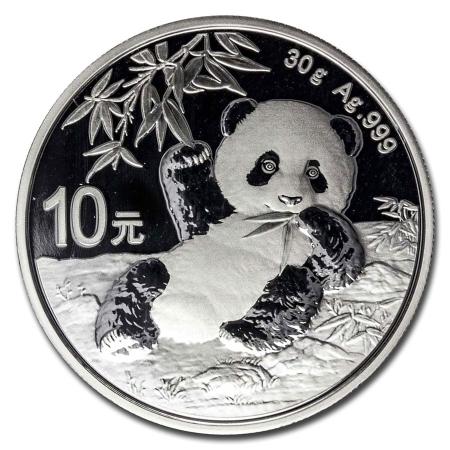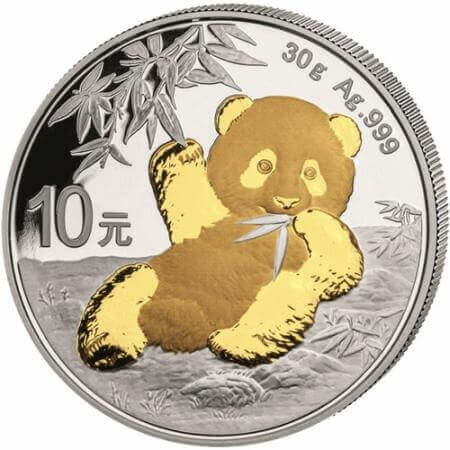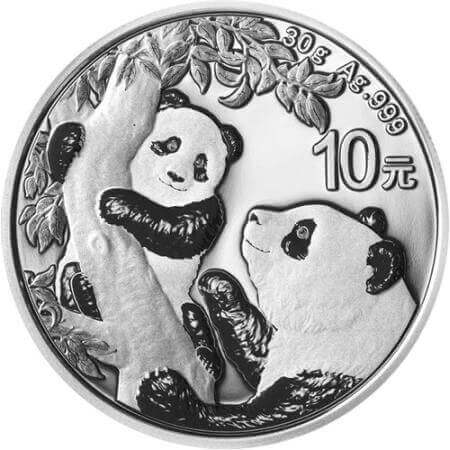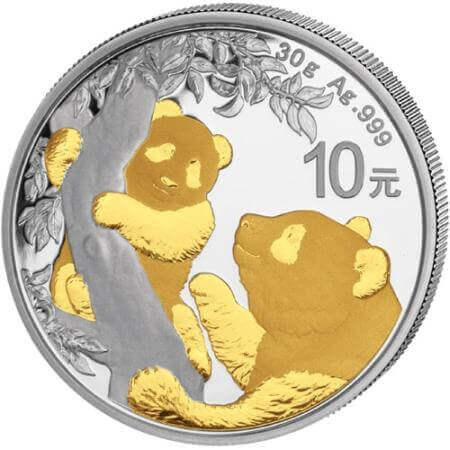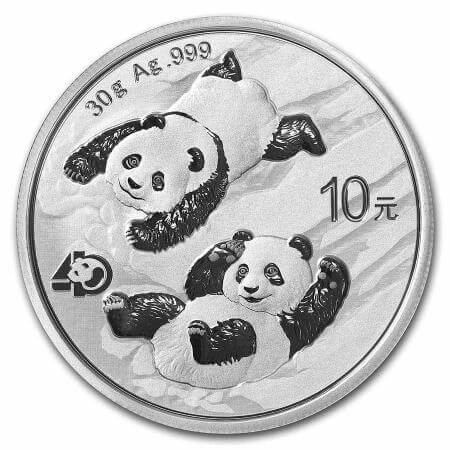Chinese Silver Panda Coins

 Chinese Silver Pandas - enticing buyers with their annually changing panda design
Chinese Silver Pandas - enticing buyers with their annually changing panda design
Many precious metal investors who prefer to buy silver coins that change their reverse design every year choose the Chinese Silver Panda coins. The first Chinese Silver Pandas were already minted in 1983. However, those coins were not bullion coins, as they were only 90% pure and only available with a proof finish. The minting of 99.9% pure silver bullion coins with the unique panda design only started in 1989. The China Gold Coin Incorporation that had already started issueing the Chinese Gold Pandas in 1982 is also responsible for the production and distribution of the silver version of the Chinese Panda coins.
Nowadays, the bullion version of the 99.9% fine Silver Chinese Pandas is only offered in the 30 gram size. Larger sizes of 150 gram and 1 kg are only available with a proof finish. Since 2016, all coin sizes are denominated according to the metric system whereas the more common troy ounce sizes were used before. Special versions of the Chinese Panda silver coins exist as well, for example gilded and colored coins as well as coins with special privy marks.
The legal tender Silver Pandas are produced under license from the People's Bank of China. Annual mintage numbers of the coins were quite low until about the year 2000. Since 2010, there has been a further boost in annual mintage which now numbers in the millions. American buyers that are investing in silver for their retirements can include the coins in their Individual Retirement Accounts (IRA's).

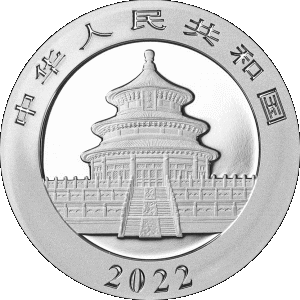
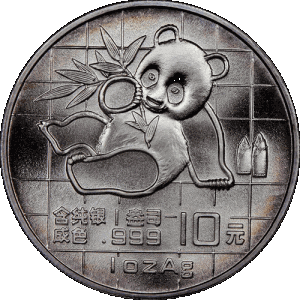
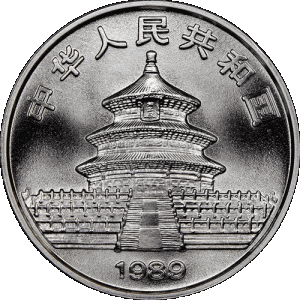
Coin Specifications
| Weight | Face Value | Purity | Diameter x Thickness |
|---|---|---|---|
| 1 kg | 300 Yuan | 99.9% | 100 x 13 mm |
| 12 oz | 100 Yuan | 99.9% | 80 x 14 mm |
| 150 gram* | 50 Yuan | 99.9% | 70 x 6 mm |
| 30 gram* | 10 Yuan | 99.9% | 40 x 2.98 mm |
| 1/2 oz | 5 Yuan | 99.9% | 33 x 2.2 mm |
| 1/4 oz** | 3 Yuan | 99.9% | 25 x ?? mm |
* weights until 2015: 5 oz and 1 oz
** only issued in 2012 as proof coin
Chinese Silver Panda Coin Designs
Silver Panda Coin Design
The obverse side of each Chinese Silver Panda coin shows a centered image of the "Hall of Prayer for Good Harvests" that is located inside the Temple of Heaven in Beijing. From the Ming dynasty on, Chinese emperors prayed there every year in early spring for abundant harvests and national prosperity. The words "People’s Republic of China" are written in Chinese along the upper edge of the Silver Panda coins and the year of issue appears at the bottom underneath the image.
Between 1990 and 2001, there existed two variations of the coins regarding the size of the engraved year of issue. That date was engraved a bit larger and thicker on the Silver Panda version that was minted by the Shanghai branch of the China Mint during this time. Coins on which the year of mintage appears smaller and thinner were produced by the Shenyang branch of the China Mint.
The outer ring that encircles the Temple of Heaven image appears on the coins since 1992. Since 2000, that ring appears frosted. The Chinese characters and date of mintage appeared raised on that year's issue. Since 2001, the characters and numbers are incused (sunk into) the obverse side's surface. The obverse side last underwent a minor change in 2016 when the year of mintage was moved closer to the coin's edge.
The reverse side of each Silver Panda coin shows a representation of a giant panda (or a group of pandas). The actual panda image on the reverse side of the coin changes annually. An exception to this rule are the years 2001 and 2002 that show the same panda design. The coin's face value, silver purity and weight appear on the reverse side as well.
The 2015 Chinese Silver Panda doesn't show the weight and purity information though. On the 2016 coin, both types of information appear on the reverse again. However, the coin's weight is denominated according to the metric system since then.
The 40th anniversary edition of the coins that was issued in 2022 includes a special 40 privy mark on the reverse side that features the image of a panda peeking out of the zero digit. That distinguishing feature of the 2022 edition is likely to make these coins especially popular among collectors.
History of the Silver Pandas
The Chinese Panda silver coin was first minted in 1983 but only in a proof version out of 90% fine silver. From 1983 to 1985, 10,000 such proof coins with a weight of 27 gram were produced in each year.
There is a 1986 Silver Chinese Panda coin (with a 5 Yuan denomination) that was issued in conjunction with the World Wildlife Fund (WWF) for their 25th anniversary. That's why it is not a part of the regular Silver Panda coin series.
Proof Silver Pandas of 1 oz (mintage of 30,720 coins) and 5 oz (8,540 coins) were then minted in 1987 out of 92.5 % fine silver. There were no 1 oz proof coins minted in 1988 but only the large 5 oz (11,000 coins) and 12 oz (5,000 coins) proof coins.
Since 1989, both proof and brilliant uncirculated 99.9 % fine Silver Panda coins are minted. Since then, Silver Pandas mostly bear the same design as the Gold Panda coins. There are some exceptions to this rule however. The 1 oz brilliant uncirculated silver coins of the years 1995, 1996 and 1998 displayed different panda designs than the gold coins of the same denomination. Proof silver coins and coins of other denominations than 1 oz also displayed different panda designs in certain years.
Brilliant uncirculated 1/2 oz Chinese Silver Pandas were only minted between 1993 and 1998. Until 1997, the largest size of the coins was 12 oz. The 1 kg Chinese Silver Pandas replaced the 12 oz version in 1998.
Colored proof Chinese Silver Panda coins of the 1 oz and 1/2 oz denomination were minted between 1997 and 1999 (1/2 oz coins only in 1997 & 1998), however not by the China Mint itself. Perhaps due to technical difficulties, the mintage of these rare coins was 'outsourced' to the private PAMP Suisse Mint in Switzerland. The Temple of Heaven is also depicted in a slightly different shape on the obverse side of these coloured silver coins. Regardless where they were actually minted, the colored Silver Panda coins are a regular part of the Chinese Silver Panda coin series. Chinese Silver Pandas on which the image of the panda on the reverse side is gold-plated (a.k.a. gilded) are also made since 1996.
In 2016, the China Gold Coin Incorporation decided to switch to the metric system in the denomination of the coins. The 1 oz denomination was changed to 30 gram. The 5 oz coin was changed to 150 gram. The silver purity and weight were not engraved on the coins in 2015 (but again in 2016 with the new weights according to the metric system).
Mintage Numbers
Mintage numbers of the 1 oz (30 gram since 2016) China Silver Panda coins vary between 100,000 coins all the way up to 10,000,000 coins. Mintage figures have exploded since 2010, setting several new mintage records.
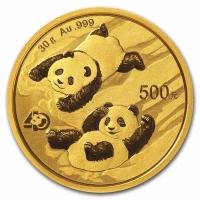
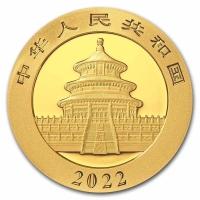
Chinese Gold Pandas
The China Gold Coin Incorporation started with the production of Chinese Gold Pandas in 1982. The 99.9% pure gold coins are available in a wide variety of sizes between 1 gram and 1 kg. Popular with both collectors and investors, the coins display an annually changing image of a Giant Panda on their reverse side. Since 2016, the Chinese Gold Panda coins are denominated according to the metric system. The larger sizes of the coins are only available as proofs whereas the 'regular' sizes are issued with a brilliant uncirculated proof-like finish. Annual mintage numbers of the coins were quite low at first but have increased sharply since 2006. Various special commemorative editions of the coins exist as well.
The Chinese Gold Panda page gives more information about the coins and allows you to compare current prices.
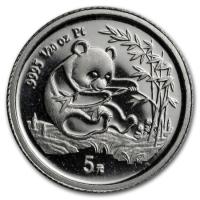
Chinese Platinum Pandas
Chinese Platinum Panda coins with a fineness of 99.95% were only released by the China Gold Coin Incorporation from 1987 - 1990, 1993 - 1997 and 2002 - 2005 in the denominations of 1 oz (100 Yuan face value), 1/2 oz (50 Yuan), 1/4 oz (25 Yuan), 1/10 oz (10 Yuan, 100 Yuan in 2002 and 2005) and 1/20 oz (5 Yuan, 50 Yuan in 2003 and 2004). The 1 oz Chinese Platinum Pandas were minted between 1987 and 1990. Those coins bear the same design as the gold coins of that year. The 1/2 oz and 1/4 oz coins were only minted in 1990 and both of them displayed a unique panda design. The 1/10 oz coin was minted in 1990 (with unique panda design), 1993 - 1997, 2002 and 2005. Finally, the 1/20 oz platinum coins were minted between 1993 and 1997 and in 2003 and 2004.
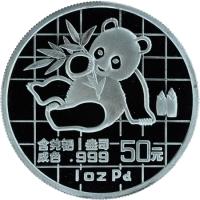
Chinese Palladium Pandas
In 1989, the 99.9% fine Chinese Palladium Pandas made their debut as a coin (commemorative proof Palladium Panda medals had been issued in 1988). A total of 3,000 proof 1 oz Chinese Palladium Panda coins was minted that year by the China Gold Coin Incorporation. The nominal face value of each of these coins was 50 Yuan.
The next Palladium Pandas came out in 2004. A total of 8,000 proof coins of the 1/2 oz denomination (100 Yuan face value) was minted that year. The same number of proof coins of the same denomination was minted again the following year 2005.
All three different issues of the Chinese Palladium Panda bear the same panda design that was also used on that year's gold version of the coins.
Chinese Panda Silver Coin Sets
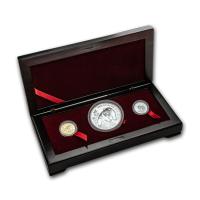
3 coin Prestigious Panda Set 1990
total gold weight: 0.1 oz
total silver weight: 1 oz
total platinum weight: 0.1 oz
The 3 included coins in this set were the 1/10 oz brilliant uncirculated Chinese Gold Panda, 1 oz proof Silver Panda and 1/10 proof Platinum Panda. All coins were dated 1990 on the obverse. A total of 750 such sets were issued.
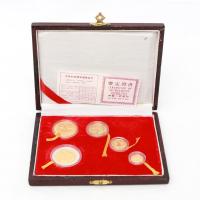
Gold Panda Proof Sets 1993-1994
total gold weight: 1.15 oz
total silver weight: 1/8 oz
2,500 such proof sets were issued in 1993 & 1994. The 1/2 oz, 1/4 oz, 1/10 oz and 1/20 oz proof Gold Panda coins are included. The 5th coin is a bimetallic (gold core & silver outer ring) coin out of 1/4 oz gold + 1/8 oz silver. All 5 included coins bear the P mint mark.
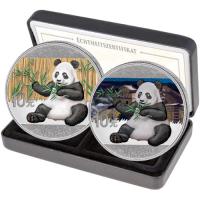
Colorized Day/Night Silver Panda Set
total silver weight: 1.929 oz
This unique set is made up of two colorized Chinese Silver Panda coins, each one 30 grams with a face value of 10 Yuan. As far as could be ascertained, the first time such a set was issued was back in 2014. The colorizing is done by Emporium Hamburg in Germany. The coins are 99.9% pure and always feature the Panda image for the respective year of issue but with two different colorized backgrounds (one representing daytime and the other nighttime). Annual mintage of this type of set is always limited (e.g. 888 sets in 2020, 500 sets for the depicted 2017 set). The two coins are issued in a wooden box that includes a certificate of authenticity.
